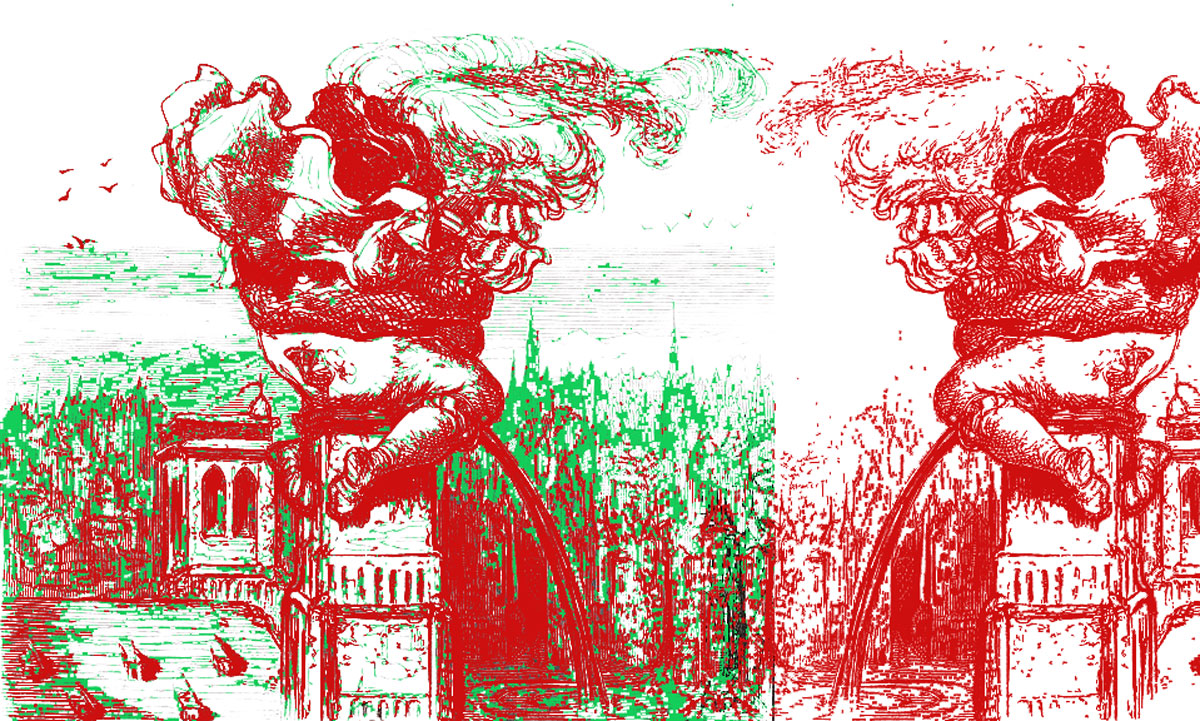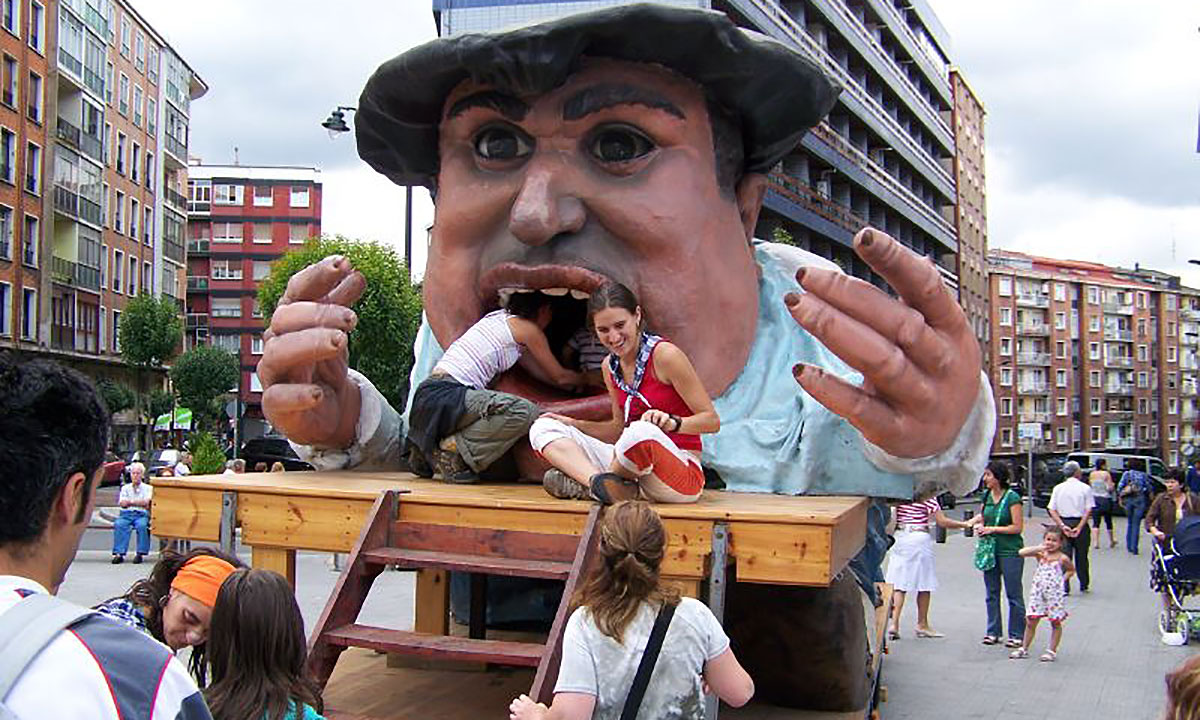
It is nevertheless surprising that there are stories of giants in all mythologies. They are present in legends, songs and folk tales, in the universal memory of all countries on all continents, and despite these known and verifiable facts, they remain desperately absent from history books, while the educated mock popular beliefs.
Once again, it is academics who are wrong. Once again, they sin by excess of pride. The sufficiency of educated people is fascinating. It is enough for a little man to have some notions drawn from studies in which he did not understand much so that this homunculus would take himself for a scientist and arrogate to himself the right to rule his fellow men. Which, most of the time, do not look like him, gods thank you!
Fortunately, there are exceptions to this heartbreaking rule. Master Alcofribas Nasieranagram of François Rabelais is a beautiful one. From his real name François Rabelais, he made memory work by recording, with fantasy and humor, the exploits of a family of giants, that of the friendly Gargantua. Known long before the books of Rabelais, the giant Gargantua is part of the folklore.
The traditional teaching, very often, has no other school than the fireside, in the wake, when a storyteller speaks. First gently, then crescendo, it comes alive, its voice swells, the tone rises and becomes vibrant, and through the magic of the sincere story, the forgotten history of our old lands comes alive in the heart of the audience .
Where does this name come from, Gargantua? Rabelais gives us a facetious etymology. “The good-natured gentleman, Grantgousier, drinking and laughing with the others, heard the horrible cries his son had made, coming into the light of this world, when he begged to ask: to drink, to drink to drink! thus he said: Que grand tu as !What great you have! meaning the mouth. So the people around said that he really must have this name Gargantua, for it was the first word of his father to his nativity, to the imitation and example of the ancient Hebrews.” (source)Gargantua, by François Rabelais
![Gargantua par SKI Stef Kervor Infographie pour Eden Saga -- d'après : Le souper de Gargantua, par Gustave Doré [Public domain], via Wikimedia Commons - https://commons.wikimedia.org/wiki/File:Gargantua%27s_meal.jpg](https://eden-saga.com/wp-content/uploads/Gargantua-dine-wkp-ski-1300X780pxl.jpg)
Language of goslings and golden tongue
Que grand tu as !What great you have! exclaims Grandgousier his father, and the child receives as first name the first words of the father, according to the custom of the ancient Hebrews, says Rabelais who knows the Bible and remembers the giants of Palestine, like Goliath.
I want to pay a warm tribute to my good master Rabelais: not only has he invented French literature, he also gives the first example of the famous language of goslings, so popular in his time: Que grand tu as !What great you have! It shows to the pedantic scholars that humor mixes well with the true knowledge, “for laughing is unique to man”. (source)Rabelais, who else?
Thanks to him for this excellent valve, and we translate in our turn the name of Gargantua not in the language of goslings, but in golden tongue, the language of the origins that the terraformers taught us, and that Alain Aillet seeks to find.
Three phonemes: GARG, AN, and TUA. In the last, it is easy to recognize TUA (th) which is found in Tuatha De Danaann and many other names of peoples, and which means precisely the people, the tribe, those of. AN, which is found in ANou, the first god of the Sumerians, in German AHN, in AN, ANcêtre or ANcestor, which means the Elders. We thus obtain: “the old people of Garg”.
Remains this last phoneme, GARG. Hey Google, what are you saying? The first thing I fall for is American slang: “a very ugly man” a guy too ugly. A closer to gargoyle, an ugly beast carved in stone. Another meaning, devour. Eat badly and greedily. Guzzle. Gobble. Google. We find this meaning in French gargotte. Another meaning is gorge, throat. See the word gargle. And finally, to derive from these three senses, there is ogre. The phoneme is distorted, it remains identifiable. And that’s exactly the definition of Gargantua: an + tua + garg = of the ancient people of the devourers. That’s to say the ogres.
Garg in you, Livry-Gargan Tuatha, he drank, he made garg, he fell dead. Where have all the giants gone? Where have the beautiful giantess gone, astonishingly tall, with vertiginous verve and insolent crest, with opulent breasts, with indecent and charming manners?

Giants are everywhere
There are giants in folklore and popular literature: Gayant, the giant of Douai; the Golden Bearded Giant of Picardy; Lydéric the great forester of Flanders; Antigonus, the giant of Antwerp; the Pâtho, in French-speaking Switzerland; Saint Christopher; Hok-Braz and Rannou, in Brittany; the Giant Tailor of Salisbury; Lady Hutt, Tyrol; the giants of Guildhall (Gogmagog and Corineus Gog); Einheer; the Crussolio Giant; that of Dessoubre; that of the valley of Servance, in the Vosges; that of Chatillon-le Duc, in the Doubs; that of Pierre-qui-Vire, in the Jura; and of course also the Ogres and Gargantua.
Gargantua, a giant apparently stemming from Celtic mythology, entered into written literature with Rabelais. Ariosto, meanwhile, has the memory of another giant in the legends of the Middle Ages, Ferragut, Roland knocked at one blow of his Durandal, and Pulci has sung another, Morgan. Later, Swift will bring his Gulliver to a land of giants, the kingdom of Brobdingnag … (source)
There are also giants in the Bible, the Torah, the Nordic and Celtic legends, the ancient texts of Sumer, those of India, China and Japan; in folk songs and folklore from Indonesia, the Philippines and Malaysia; in the oral traditions of Native Americans, Africans and Inuit. Giant bones can be found in the well-closed cellars of some museums, whether or not you like incompetent graduates. Giants are everywhere except in their memory. Clogged with emery, these donkeys will be convinced that giants are invented even when they see them for good. Giant thank you, simple people do not have such silly modesty. They love them, our giants from before.
Giant processions
Giants and large animals appear in festivals and processions in Europe in the fifteenth century almost simultaneously to the North and South of the continent.
They are there first, in the middle of the crowd, like the figures of an oversized catechism. They illustrate the Old and New Testaments. There were also imaginary figures (monsters, animals, brave savior warriors from popular legends etc …).
In northern Europe, mainly in Flanders, they liberate themselves from the grip of the Church in the 17th and 18th centuries. Secular figures and tutelary heroes of the city appear. The French revolutionaries destroyed many giants. But from the beginning of the 19th century, the tradition is reborn, entirely secular and popular. After the Second World War, a new impetus is affirmed and the giants multiply. This phenomenon has even intensified since the 80s and its vitality is not being denied.
Giants are born of the imagination of men. Local artists and artisans are responsible for the effigies of wood, paper mache and wicker. Historically several giants have been manufactured by the corporation of the manneliers (manufacturers of wicker baskets). Then they are baptized.
It is still men who wake them up and dress them up. Local rituals exist around these preludes to the party. During the procession, porters are essential to give life to the giant and make him dance (watch as they dance!). It is often an honor to endorse this charge. The group of porters is respected and often envied by the local population. They can wear only up to a hundred pounds on their shoulders!
Bearer schools are developing in the North to perpetuate the tradition. Several giants are accompanied by their own fanfare. Finally, the population speaks to its giants, marry them sometimes. A real sociability exists around these characters.
In Douai, we talk about gay people, which means giants in Picard. The giant Gayant was created in 1530. He is now the head of a family of five members. The legend disputed the identity of the father: he would represent Jehan Gelon, lord of Cantin who delivered the city of Douai besieged by the Normans towards the end of the ninth century or so Saint-Maurand appeared in a dream to avoid taking the city by the French in the 15th century. His wife was established in 1531 by the Fruit Corporation. Their children, Jacquot, Fillon and Bibin were born in 1720. (source)

When the author indicates that “the giants are born of the imagination of men” he does not speak about the real ones, but the effigies that one walks during the festivals and carnivals of the North, Flanders and elsewhere. For my part, I am sure that, if they hit the popular imagination so much, the giants are a reality of our distant past, like woolly mammoths and feather dinosaurs.
The giants have existed, there are so many traces of their stay on this planet, the time when the gods walked among men. We walk them today so that the gods, again, walk among men. Nostalgic, their many devotees carry them in the streets of their city, and baptize them, and marry them, and give them descendants. Should we regret them so much? Everyone seems to have forgotten how the giants ended up: devouring ogres.


